|
Archive for the year 2014
YOU chose color coded dynamics!
Of the 641 of you who responded to last month's survey there was a slight preference for colors being used to represent dynamics (loudness). Almost 42% of you preferred dynamics while 24% and 35% preferred colors to encode form and modulations respectively. However among those of you who are piano teachers, whom I happen to really respect, the results were more lopsided. Of the 61 of you who are teachers, fully 6 out of 10 preferred dynamics while only 2 out of 10 preferred form and another 2 of 10 preferred modulations. See the charts below.


Since you chose color coded dynamics I will oblige by providing more pieces with what I have been calling "dynamic colors." Look for them soon in Intermediate Level 1.
Write your comments at facebook.
|
NEW MUSIC for December! "Cielito Lindo" in Level 4C
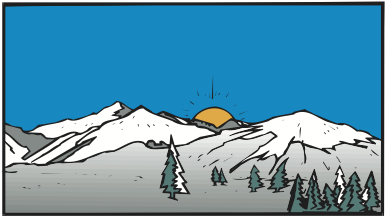 |
You have probably heard "Cielito Lindo" sung and played by mariachi bands. It is a popular Mexican song whose title roughly translates as "Pretty Darling," although "cielito" also can mean sky or heaven. This song, which is identified so strongly with Mexico, harkens back to the country's Spanish heritage by referring to the Spanish Sierra Morena mountain range in the first line.
Write your comments at the facebook group.
|
NEW for November! Color coded dynamics in Keyboard Classics!
Now you can see how loudly to play simply by looking at the color of the notes! Color coded dynamics (the musical term for volume) in the Keyboard Classics level emphasize a crucial musical element which students frequently ignore. In this level a column has been added headed with the symbol  right next to the pdf column. Click on the green dots below this new symbol and you will get the same pieces as before, but now with the addition of notes color coded for dynamics. Even gradual increases and decreases in volume ((crescendos and diminuendos) are notated with gradients slowly moving from one color to the next. right next to the pdf column. Click on the green dots below this new symbol and you will get the same pieces as before, but now with the addition of notes color coded for dynamics. Even gradual increases and decreases in volume ((crescendos and diminuendos) are notated with gradients slowly moving from one color to the next.
But wait! There is no reason other musical elements cannot also be color coded. Since I only have time to revise scores for just one element I will leave the decision up to you: Would you rather I color code for
1. Dynamics. See Example 1 or
2. Form (the sections in a piece). See Example 2, or
3. Key changes (modulations). See Example 3?
Cast your vote here and I will continue with this project however you suggest. [Survey has been closed as of December 1, 2014.]
|
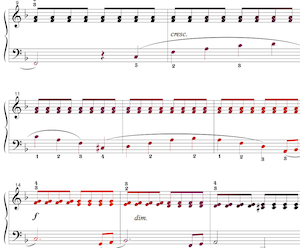 |
NEW Music for October! Two pieces introducing left hand C position
1. "Il est né le divin Enfant" in Primer Level B
 |
Here are two pieces with an easy left hand part an octave below the right hand in what is sometimes called "C position." Almost all pieces listed in the First Pieces and Primer levels before these are arranged in what I call "Thumbs share C." Il est né le divine Enfant" and "There were three Jolly Fishermen" have been added as an introduction to C position.
"Il est né le divin Enfant" is a popular French Christmas carol. There is more music with several verses not included here which describe the foretelling of the birth of Jesus by the prophets and the humble conditions of the birth in a manger. Listen to this video for the full version.
Write your comments at the facebook group.
|
2. "There Were Three Jolly Fishermen" also in Primer Level B
These three fishermen are named in subsequent verses as Abraham, Isaac, and Jacob, and for some odd reason they all end up sailing to Amsterdam. With clear references to bible stories this song is a standard at Jewish camps, and can be heard occasionally as a boy scout or girl scout song.
Write your comments at facebook.
|
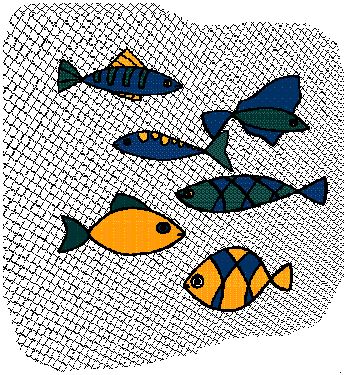 |
Your NEW Music for September! "Brahms' Lullaby" in Primer Level B
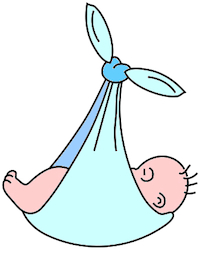 |
Here's the much loved lullaby which Brahms wrote for his good friend Bertha Faber on the birth of her second son. I have included both the original German words for our German speaking friends and the traditional English words (even though I myself had to look up the meaning of "bedight"!). This lullaby has already been available in Level 3B, but the tune is so popular that I thought it also would be fun for pianists who are playing at an earlier level.
Write your comments at the facebook group.
|
NEW for August! Rondo Alla Turc (Turkish March)
from Mozart's Sonata No. 11 in Level 3B
The European nobility during Mozart's time was fascinated by all things Turkish. Turkey was exotic and, as home to the Ottoman empire, it was a real power to contend with. Imitations of Turkish culture became a fashion called Turquerie, and many European classical composers wrote pieces in what was considered to be a Turkish style. Beethoven for instance wrote a Turkish march in the last movement of his ninth symphony featuring the Turkish sound of a piccolo, bass drum and triangle. Mozart wrote this Turkish rhythm (in red) in the Turkish march you are now receiving:

So download your new music and learn this popular piece in a new and easy arrangement, or download the full march as originally written by Mozart from the Intermediate 4 page.
Write your comments at facebook.
|
 |
NEW for July! "Flower Power", another composition by B Meyer in Level 3C
 |
Ms Meyer writes that she was inspired by Debussy's "Jardins sur la Pluie", which she once attempted to learn. "I wanted a similar feel and sound but playable by people with less experience and smaller hands. "Flower Power" really impresses people when you play it! It sounds a lot harder than it is. One of my students (8 yrs old) just played it for a recital and blew everyone away."
Thanks for your music! When something "sounds a lot harder than it is" you can be sure it's a great recital piece!
Write your comments at the facebook group.
|
Also NEW for July! "Sweetly Sings the Donkey" First Pieces, A
Sweetly sings the donkey?" I don't know, but with a vocabulary limited to "Hee" and "Haw" on just the two notes G and C, I sense some serious sarcasm here! This beginning piece is a fun round and I have provided an easy accompaniment with the three different parts played against each other. Watch the timing on the last line--the pick-up and the long notes had better be counted out to work with the accompaniment.
Write your comments at facebook.
|
 |
Your NEW tune for June! "He's Got the Whole World" in Level 4A
 |
Frank Warner collected this spiritual from the singing of Sue Thomas in North Carolina. Warner also performed it and recorded it on an Electra label in 1952, but it was not until 1958 when it was recorded by the young British singer Laurie London, that it really became popular. Wikipedia says, "It was the most successful record by a British male in the 1950s in the USA" and, "It was the first, and remains, the only gospel song to hit #1 on a U.S. pop singles chart."
I arranged this tune in C and D with a left hand figuration which spans an octave throughout the piece. Meanwhile the right hand plays bouncy syncopated chords. The chords themselves are easy; it's the syncopation which might take some practice. But hey, it's well worth the effort--that bouncy sound is "so fun!"
Write your comments at the facebook group.
|
NOUVEAU pour Juin! "Compagnons de la Marjolaine" dans Niveau 2B
Selon Monique Palomares qui écrit sur mamalisa.com,
En cherchant des renseignements sur qui étaient ces "compagnons de la marjolaine", j'ai trouvé que la marjolaine était utilisée dans les chansons comme la rose ou le muguet, comme prélude à l'amour, ainsi que le fait que les jeunes gens qui partaient faire la fête mettaient des brins de marjolaine qui dépassaient de leurs bottes, formant ainsi une mouvante "Compagnie de la Marjolaine", les deux versions disant qu'ils étaient des séducteurs.
J'ai aussi trouvé dans "Trésors des plus belles mélodies de tous les temps et de tous les pays", Delfolie, Editions Edsco, Chambéry, 1947" qu'au 15ème siècle, les gens ne disaient pas "donner la sérénade" à quelqu'un mais "réveiller les pots de la marjolaine" et que la Confrérie de la Marjolaine était la confrérie des parfumeurs, très puissante parce que la cour et la ville faisait un usage intense des parfums. La chanson remonte aux alentours de 1650.
D'après Du Mersan (Chants et chansons populaires de France, t. 2) c'était la rencontre des jeunes gens et jeunes filles qui allaient danser dans les prés où fleurissait la marjolaine."
Bref, c'étaient de bien joyeux drilles!
Écrivez vos idées sur facebook.
|
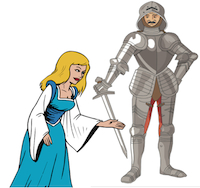 |
NEW for May, by guest composer B Meyer! "The Brook" in Level 3B
 |
Ms Meyer tells us that, "The Brook was written as a potential recital piece so kids could play something that no one else would be playing. It's called The Brook because of the way it seems to flow over rocks. The fingering challenges make it a good lesson as well."
This is one of many pieces for guitar and piano which Ms Meyers has written and we hope to include many more in the future. Thank you!!
Write your comments at the facebook group.
|
NEW for April! "Billy Boy", a theme and variation in Level 1C
Poor Billy! Hopelessly in love with a young girl who is not ready to leave home. (I changed the words "young thing" in this song to the less offensive "young girl") The first half of this piece, the theme, is a rather easy first experience in G position. The only unusual thing is finger 2 crossing over the thumb. The variation is the same except for a light right hand accompaniment and some more challenging finger crossing.
So what I am giving you is really two pieces in one. Each half works well as a stand alone piece and students can play just the first half, just the second half or both together depending on their skill level. As such "Billy Boy" will be a valuable addition to a beginner's repertoire.
Write your comments at the facebook group.
|
 |
NEW for March! Two Waltzes!
First my original composition, "Lost Waltz" in Level 4B
 |
These are "Old Time" waltzes, that is, they are in an old time fiddling style that I learned at my summer camp up in Vermont. "Lost Waltz" has an especially curious ending. Clearly in C major, it ends up on a surprising A minor chord. Don't play it just once! The transition from the ending in minor to the beginning in major sounds terrific! As you might suspect, the name "Lost Waltz" comes from the fact that I had made it up, left it in a drawer for many years, actually forgot about it, and then finally discovered it by accident one day.
My hope is that some old time fiddlers and contra dance bands might find this waltz and perform it. Come on fiddlers, I'm posting it for free for you!
Write your comments at the facebook group.
|
ALSO NEW for March! "Shepherd's Wife Waltz" in Intermediate Level 1
This is an old time fiddler's waltz which I learned as a camp counselor--see this rendition on YouTube. In fact it was the inspiration for "Lost Waltz" which I describe above. I remember our square dance band leader yelling above the fray (our dance bands were large), "The bass should go in contrary motion to the melody!!" --one of my first lessons in music theory. And speaking of music theory, I hope none of my professor friends scolds me for the parallel octaves in this arrangement. It's folk music for goodness sake. Lighten up!
So yes, my fellow music enthusiasts, good advice for all of us. Just lighten up and enjoy!
Write your comments at the facebook group.
|
 |
NEW for February! "I've Been Working on the Railroad" in Primer Level B
AND in Level Four C
 |
Certainly my grandson's favorite song in the world (he LOVES trains), I arranged this old chestnut for two levels. In Primer Level this is by far the longest song, and would therefore make a great recital/show-off piece. Piano players at Level Four will enjoy playing this challenging version in front of young audiences.
I have been wanting to arrange this song for a while. The only version that has been on my site until now has been a practice version to become familiar with bass clef.
Write your comments at the facebook group.
|
| NEW MUSIC for January 2014! "Gray Squirrel" in Primer Level, A
|
Have fun with hand gestures! I found these at
http://montessori-songs.blogspot.com. Thank you!
Gray squirrel (put right hand out in front of you with wrist bent down like a paw),
gray squirrel (put left hand out to join the right hand with wrist bent like a paw),
Shake your bushy tail (wiggle hands to left and right, wiggle hips, and bend your knees more on each beat).
[repeat]
Wrinkle up your little nose (point to your nose with one finger),
Put a nut between your toes (use your pincer grip to pluck an imaginary nut from the air and bring it down between your toes)
[repeat beginning]
Write your comments at the facebook group.
|
 |
Also new for January: The Theme from Tchaikovsky's Swan Lake
in First Pieces B
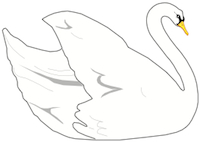 |
Tchaikovsky's ballet, Swan Lake, is a love story about Odette, who was turned into a swan by a sorcerer, and Prince Siegfried, who has been forced by his mother to choose a bride. When the prince goes hunting he is enchanted by the lovely Odette/swan, but he is then tragically fooled by the sorcerer who has transformed his own daughter to look like Odette. Prince Siegfried declares his love to the imposter, realizing his mistake only too late. Broken hearted both Odette and the prince plunge into Swan Lake and drown.
I first heard this theme on a music box. I had no idea at the time how much people loved it.
Write your comments at the facebook group.
|
See earlier postings of sheet music in the archives for 2010, 2011, 2012. and 2013.
|
|




















